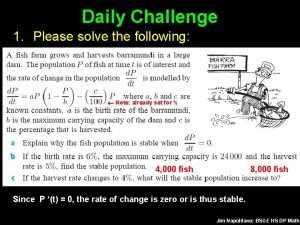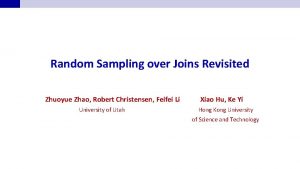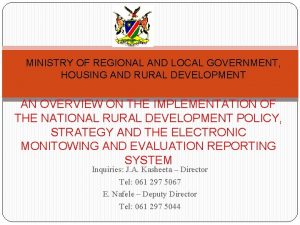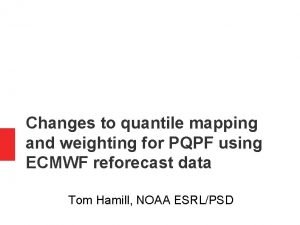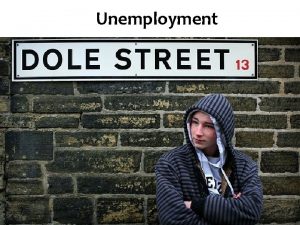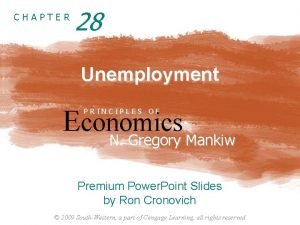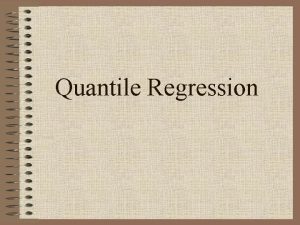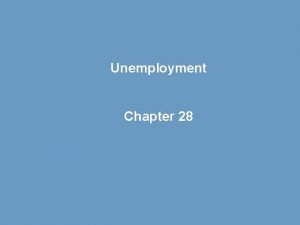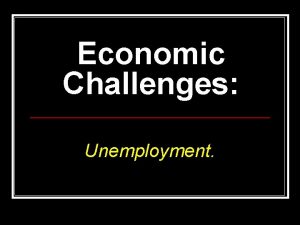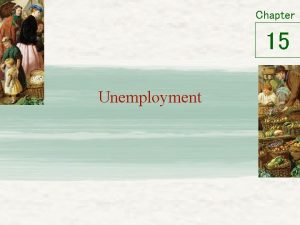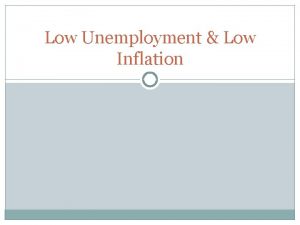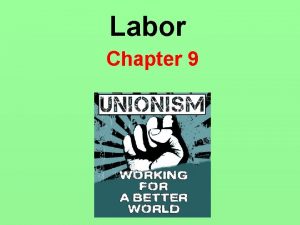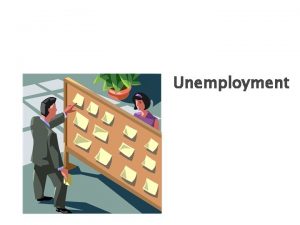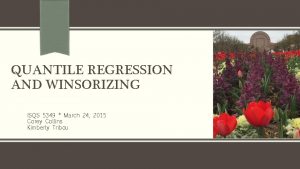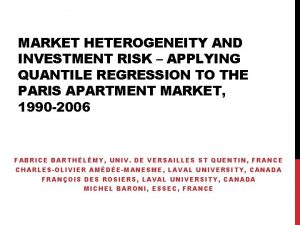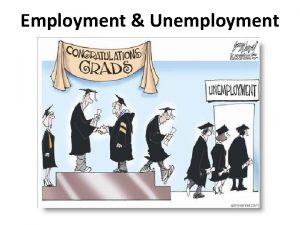Employment Reallocation and Unemployment Revisited A Quantile Regression
















- Slides: 16

Employment Reallocation and Unemployment Revisited: A Quantile Regression Approach Theodore Panagiotidis Department of Economics, University of Macedonia, Greece and Rimini Centre for Economic Analysis, Italy. Gianluigi Pelloni Department of Economics, University of Bologna, Italy; Department of Economics, Wilfrid Laurier University, Canada; and Rimini Centre for Economic Analysis, Italy. 1

Introduction • Intersectoral labour reallocation as a triggering force of aggregate unemployment fluctuations. • An aggregate shock → firms to lay off workers temporarily → changes in aggregate employment and unemployment. • Sector-specific shocks, affecting the allocation of demand across sectors, → intersectoral movements of workers → the time-consuming processes of searching, retraining and relocating → could also alter the levels of (un) employment (Lilien, 1982 a). 2

Introduction • Up to 1980’s aggregate shocks seen the driving force of unemployment cycles. • Lilien(1982 a) Sect. Shifts Hypothesis. : reallocation shocks →macroeconomic effects. • Changes in demand composition operate as the driving force of unemployment fluctuations. Idiosyncratic shocks bring flows of job reallocation from declining sectors to expanding ones 3

Literature • Lilien (1982 a): reduced form equation with dispersion index: σt = [ j (N j, t / N t) ( Δ ln N j, t - Δln Nt)2]1/2 • Criticism: Lilien (1982 b, WP); Abraham and Katz (1986). • Literature Review: Gallipoli & Pelloni (2008) 4

Methodology • Most of the existing literature focuses on the conditional mean response (LRM). The latter assumes symmetry and linearity. • Literature approached the issues by employing nonlinear models both at univeriate and multivariate level. • This paper is the first attempt to investigate this issue by quantile regression (QR): assymetry 5

• QR (Koenker and Basset, 1978) is a tool that allows us to model distributions. • Starting point for QRM → conditional quantile function (CDF). • The CDF of Yi at quantile τ given a vector of covariates Xi is given by: 6

• Where is the distribution function of Yi at y, conditional on X. When τ=0. 10 describes the lower decile of Yi given X. • Reduced form of the estimated model: i i • ut = ln(Ut/(1 - Ut)) logistic transfromation 7

8

9

10

11

12

What happens if we replace the logistic transformation with unemployment rate? 13

14

15

Conclusions • Assymetry in the relationship revealed. • The higher the unemploeyment the more reallocation is taking place. • Deficit: upward sloping, negative and significant • Money: singificant at the 12 month lag only when unemployment is high. • Energy: not singificant 16
 Diagramme quantile quantile
Diagramme quantile quantile Math lesson
Math lesson Zhuoyue zhao
Zhuoyue zhao Reallocation
Reallocation Simple multiple linear regression
Simple multiple linear regression Multiple regression formula
Multiple regression formula Logistic regression vs linear regression
Logistic regression vs linear regression Logistic regression vs linear regression
Logistic regression vs linear regression What is the average quantile measure for a 6th grader
What is the average quantile measure for a 6th grader Math inventory scores
Math inventory scores Quantile score chart
Quantile score chart Math inventory score chart
Math inventory score chart Quantile mapping python
Quantile mapping python Quantile plot in data mining
Quantile plot in data mining Objectives of unemployment
Objectives of unemployment Principles of economics chapter 28 answers
Principles of economics chapter 28 answers Relationship between inflation and unemployment
Relationship between inflation and unemployment

